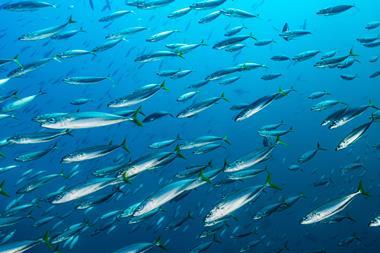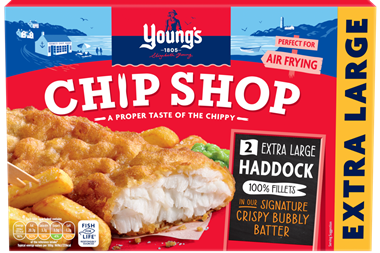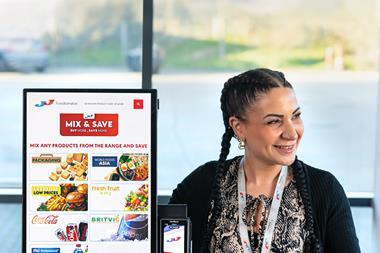Adding value is key to Denmark's fish industry as it seeks to counterbalance dwindling supplies and boost its vigorous seafood export trade says Nicki Holmyard
Denmark is one of the world's top 20 fishing nations, but, in line with other countries bordering the North Sea, fears that its industry is in crisis.
Its most valuable catch is cod, fishing for which was banned for a time earlier this year. Fishing effort is once more under way but with very restricted quotas. Shortage of fish has led to inflated prices for cod, mackerel and herring. The Danish Directorate of Fisheries reported that earnings in the first three months of this year were higher than for the same period last year.
At the main fishing port of Hanstholm, which handles around DKK 500 million worth of cod, haddock, plaice and saithe each year, processors and exporters recently launched the Hanstholm brand' which they hope will add value to their dwindling supplies.
According to Jes Telefsen of the Hanstholm fish exporters' association, the new branding will signify top quality, fresh supplies, and is aimed at the European market. "We launched this initiative at the European Seafood Exposition and received a lot of interest from retailers who want quality fish," he said. Value adding in fish is not particularly advanced although fish is increasingly part-processed and sold as fillets, loins, steaks and portions packed in MAP or frozen form.
Breaded fish burgers, fishfingers and fillets are gaining in popularity, but recipe dishes are few. Breaded and value added fish products currently account for less than 10% of total exports.
Many fish exports from Denmark are processed from imported supplies. Processors are increasingly adding smoked or frozen exotic species to their production lines including tuna, swordfish, redfish and Nile perch, as well as northern shellfish species such as King crab. These tend to be processed as IQF fillets or steaks and packaged for retail or foodservice sale.
FodecoA/S is a major processor of exotic species which complement its whitefish fillet and shellfish ranges. It processes shrimp and whole tail scampi for export and is one of the country's foremost vendors of blue mussels.
Danish mussel production is increasing and the country's fresh mussels are increasingly seen in UK wholesale.
Prawns and nephrops account for around 25% of Danish fish exports for human consumption and are sold chilled or frozen cooked and peeled, shell-on chilled or frozen, and cooked and packed in brine. Nephrops may be processed and frozen as scampi or sold whole.
Royal Greenland is the world's largest producer of coldwater prawns and has several processing units in Denmark. It operates to an audited environmental charter that promotes responsible and sustainable use of marine resources.
"This is important to us and increasingly important to our customers," says Nigel Lund, UK commercial business manager. In the UK Royal Greenland prawns achieved new heights of market penetration earlier this year after being voted the favourite filling in sandwiches at the Manchester United football ground.
Preserves and semi-preserves including canned mackerel, marinated herring products, fish roes and spreads, plus smoked delicacies such as salmon, trout, mackerel and eel, are popular products for home consumption and are increasingly finding markets in the EU.
Denmark lands and processes around 80,000 tonnes of herring and mackerel each year, with much of the herring destined for marinated products. Several UK manufacturers import Danish herring for processing, including the Orkney Herring Company which has a major share of the UK retail marinated herring trade.
Mackerel receives the most attention in terms of product development and Danish manufacturers market this fish in cans with a huge variety of sauces. These include tomato, vegetable and olive oil, brine, chilli, pepper, curry, mustard, Worcester sauce, white wine and escabeche sauce. Considerable quantities of smoked mackerel also find a market in Northern Europe.
Dronning Seafood is one of the country's biggest canners, producing a host of its own brand and branded label products that include salmon, fishballs, cod roe, cod liver, tuna, kippers and mackerel. It prides itself on being an innovator and recently launched products aimed at increasing fish consumption in children.
It introduced three fish spread varieties mackerel and tomato paste, cod roe paste and mackerel and cod paste in a carton containing two 75g cans with a plastic lid for storage in the refrigerator.
These were well received as a lunchbox item on the domestic market.
MD Claus Jensen expresses his hope the company will repeat this success in the UK and on mainland Europe.
Aquaculture in Denmark is based mainly on trout production, with portion sized river trout packed fresh or frozen for export. Larger trout are grown in saltwater pens and for filleting or smoking.
Companies exporting fresh or smoked salmon work closely with farmers in Norway and the Faroe Islands, who produce fish to their specifications. Trout roe caviar substitutes are increasingly popular by-products of aquaculture and find a growing market throughout the EU.
The Bakkavor Group and Bornholms specialise in a number of roes, including lumpfish and trout, as well as genuine sturgeon caviar.
{{Z SUPPLEMENTS }}
Close menu
- Home
- Retail & Wholesale
-
Products & Suppliers
- Back to parent navigation item
- Products & Suppliers
-
Product Categories:
- Back to parent navigation item
- Product Categories:
- Alcoholic drinks
- Bakery
- Cereals & breakfast
- Cheese
- Chicken & poultry
- Chocolate
- Confectionery
- Crisps, nuts & snacks
- Dairy
- Fish
- Fresh produce
- Frozen
- Household
- Meat
- Own Label
- Sauces & condiments
- Seasonal
- Soft drinks
- Vaping
- Vegan & plant-based
- World foods
- Suppliers
- People
- Reports & Data
-
Topics A-Z
- Back to parent navigation item
- Topics A-Z
-
Popular topics:
- Back to parent navigation item
- Popular topics:
- Cost of living crisis
- Crime
- Deposit Return Schemes
- Finance
- Government & Regulation
- Health
- Inflation
- Loyalty
- Marketing
- Mergers & Acquisitions
- New Product Development
- Sourcing
- Supply chain
- Sustainability & environment
- Technology
- Ultra Processed Foods
- Vaping
- A-Z all topics
- Content by type:
- Events
- Subscribe now
Sign in to comment on this article
Not logged in before? Register for FREE guest access today.
You will be able to:
- Read more stories
- Receive daily newsletters
- Comment on stories
Advert


















No comments yet